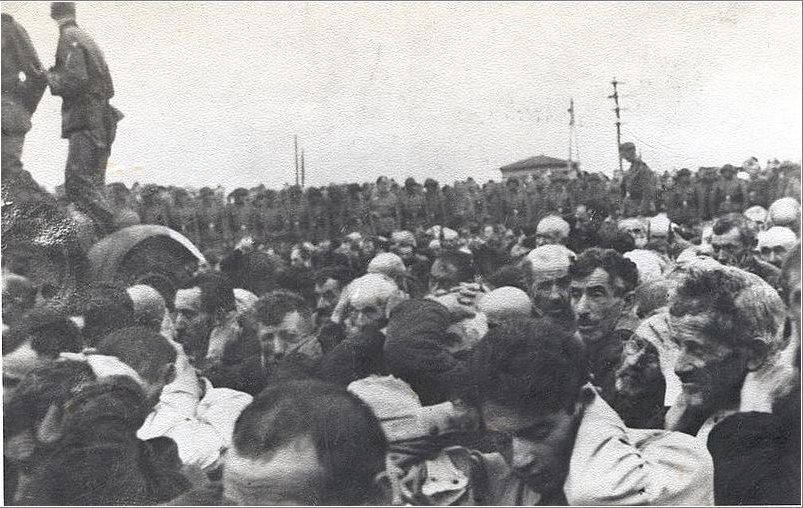About 210,000 Jews and about 72,000 Poles died in Bezirk Białystok (Białystok District), established in July 1941. During the German occupation, it included the pre-war Białystok voivodeship (without the Suwałki region), and some of the Pruzhany and Brest poviats from the former Polesie voivodeship. In the fall of 1941, the territory of the District was enlarged by the Grodno District.
The largest ghetto was organized in Białystok inhabited by 40 to 60 thousand of residents. Its liquidation began in February 1943. The surviving Jewish population was concentrated in the so-called small ghetto which also ceased to exist. The deportation began on September 8, 1943, and its inhabitants were sent to extermination camps (Bełżec, Auschwitz-Birkenau) and concentration camps (Majdanek).
Some Jews survived disassembling machines in factories, sorting and transporting post-Jewish property, which was transported to warehouses, located at Kolejowa Street, subordinate to the Treuhandstelle. Later, prisoners of war who lived in barracks near the railway station helped to clear the ghetto of more valuable things.
The last, tragic event that affected the last Białystok’s Jews was the establishment of the Komando 1005. It consisted of 43 people and was organized by Waldemar Macholl (SS-Hauptsturmführer) in order to cover up the traces of Nazi crimes. In July 1944, the Jews from Komando 1005 realized that the Germans would want to murder them, but their chances of escaping were limited as they were imprisoned and released only for “actions”. It was only during the execution that the “smokers”, as they were called, decided to escape. Nine of them succeeded, 34 were shot down. For 14 days the lucky Jews stayed in hiding until the end of the German occupation.
Chaim Wróbel survived, a witness at the Macholl trial in Białystok, and Szymon Amiel, who reported how the Germans tried to get rid of the evidence of the crime, blurring the traces of the murders. He testified that in May 1944, for eight weeks a car left the prison in Bialystok to transport members of the Komando in handcuffs to the places of mass murder near Augustów, Grodno, Siedlce and Białystok, where they were ordered to burn the corpses, grind the bones. and scatter ashes under pain of death.
It is estimated that out of all the inhabitants of the ghetto, 260 people survived the war, mainly in camps and partisan squads, as well as in hiding on the “Aryan side”.





